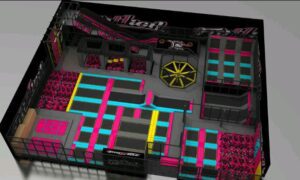Building a brand from the ground up is no easy task. What should it look like? How should it make people feel? Will it resonate with my target audience?
These questions inevitably come up when you start thinking about how brands are built, connecting the dots between what you are selling and who you are trying to reach.
What Is a Brand?
A brand is not just a recognizable name and logo that distinguishes you in a crowded market. Your brand is how people perceive you wherever they interact with your business—the impressions you can control and those you cannot.
When you think about it, we all have personal brands, too. We each have a face, a name, a style, and a way of communicating, and we make different impressions on people with these traits.
Likewise, businesses have names, products, logos, colors, fonts, voices, and reputations that makeup what they are and affect how they are perceived.
You cannot effectively start developing a successful brand strategy without being consistent and maintaining that consistency as you extend your brand to every part of your business.
The best way to build your brand equity starts with establishing what that consistency will look like and the feeling you want it to evoke.
Let us start by laying the groundwork to build your brand equity.
1. Research Your Target Audience and Competitors
Before you start making decisions on how to create a business brand, you need to understand the current market where you wish to operate, i.e., who your current competitors and potential customers are.
There are different methods to do this step of how to build a brand:
Google your service or product category and analyze the direct and indirect competitors.
Go to Reddit, check subreddits that relate to your customers, and monitor their conversations and product recommendations.
Talk to people who are part of your target market and ask what brands they buy from in your space.
Look at the relevant social media pages and accounts your target audience follows.
Go shopping offline or online and get a feel for how your customers browse and buy products.
It is essential to understand all these before moving forward, as it will inform what your brand should focus on and how it can position itself apart from competitors.
2. Choose Your Business Name
What is in a name? Depending on the type of business you want to start, you can make the case that your name matters very little, or it matters a lot.
As we have said, a brand is much more than a name. The personality, actions, and reputation of your brand identity give the name meaning in the market.
But as a small business owner, your company’s name is probably one of the first significant commitments you have to make. It will impact your domain name, brand logo, marketing, and trademark registration.
Ideally, you want a brand name that is hard to imitate and even harder to confuse with existing players in the market.
If you have plans to expand the product lines you offer down the road, consider keeping your business name broad so that it is easier to pivot rather than choosing a name based on your product category.
3. Write a Slogan
A catchy slogan is a great asset to have—something descriptive and brief you can use as a tagline in your website header, social media bios, custom business cards, and anywhere else where you have very few words to make a significant impact.
Remember that you can always change your brand slogan as you find new angles for your brand’s marketing—Pepsi has gone through over 30 slogans in the past few decades.
A good slogan is short, catchy, and makes a solid impression to boost brand awareness.
4. Choose the Look of Your Brand (Font and Color)
Once you have got a name down, you will need to think about your branding design—how you will visually represent your brand—namely your colors and typography. This will come in handy when you want to build your own website.
Choosing Your Colors
Colors do not only define the look of your brand; colors also convey the feeling you want to communicate and help you make it consistent across everything you do. It is important that you choose colors that differentiate you from direct competitors to avoid confusing consumers.
Choosing Your Fonts
At this point, looking at fonts you might want to use on your website is also good.
The best way to go about this is by keeping it simple. Pick two fonts at most to avoid confusing visitors: one for headings and one for body text (this does not include the font you might use in your brand logo).
5. Design Your Brand Logo
Brand logos are probably one of the first things to mind when building new brands. And for a good reason: it is the face of your company, after all, and could potentially be everywhere that your brand exists.
Ideally, you will want to create your brand with a unique, identifiable, and scalable logo to work in all sizes (something often overlooked).
Consider all the places where your brand’s logo should be: from your website, your social media accounts profile picture, your YouTube channel banner, to even the little “favicons” you see in your current browser tab.
6. Apply Your Branding Across Your Business
Applying your branding across every area of your business gives it a cohesive brand story. A brand story represents who you are and what your business stands for. It sets the stage for every interaction between you and your customers, in-store and online.
In our research on what wins buyer and customer trust, we found that buyers buying from a brand for the first time often look for the business’s mission and purpose to see if they share the same values with the company.
If your business has a brand story, sharing it with your prospective buyers can help them feel reassured yours is a legitimate business.
Conclusion
A strong brand is a must-have for building a successful business in today’s competitive world. Without the proper branding, you cannot connect with your customers on an emotional level.
This means that any customer will abandon your business as soon as they find another brand they can resonate with.
Building a strong brand identity gives your customers something to truly connect with. It keeps your customers coming back for more, sets you apart from the competition, and turns one-time customers into dedicated brand advocates.



































